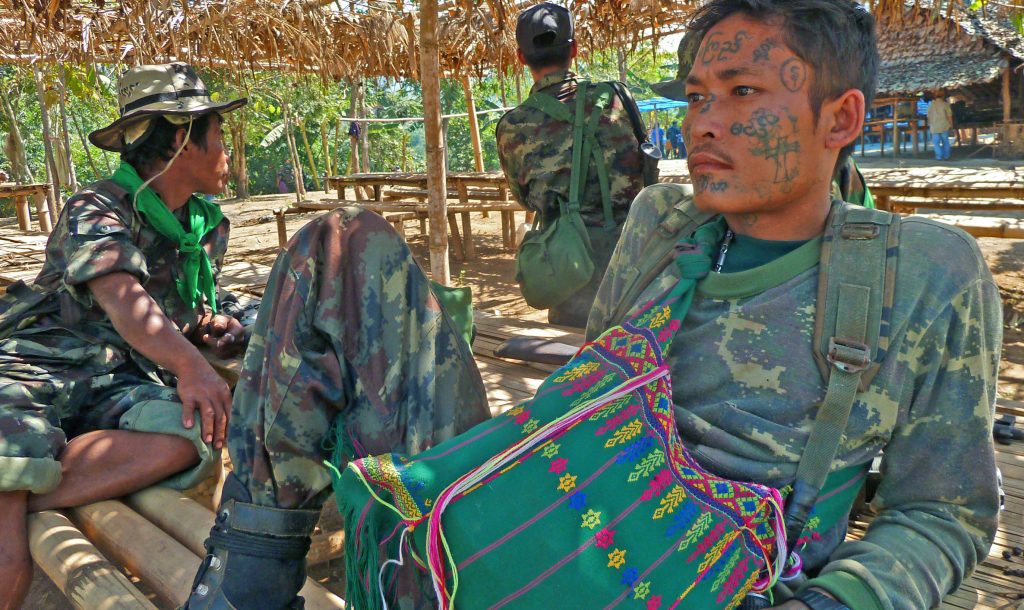This column was published in The Myanmar Times on Monday, 27 June 2016.
Eventually, the shockwaves from Britain’s vote to leave the European Union will ripple into Myanmar affairs. One way or another, we all need to digest the lessons of last week’s historic referendum.
Where should we start? Perhaps with a general point: any political system made up of a loose constellation of peoples tends to struggle, over the long term, with centrifugal forces.
In their own style, the people of Myanmar know this story well. It is at the heart of a long history of contention and despair. In Myanmar’s sad case, claims for independence have made it easier for despots to argue that iron-fisted rule is the only way to preserve national cohesion.
When they secured independence from Britain in the 1940s, the country’s leaders had a more open mind about alternative political structures. They even codified a right to secession.
Chapter X of then-Burma’s 1947 constitution stated “… every State shall have the right to secede from the Union in accordance with the conditions hereinafter prescribed.” The provisions that followed are well known, but the basic idea was that ethnic minorities had to wait 10 years to exercise this “right”.
War and strife followed. Unwilling to accept the possibility of territorial fragmentation, General Ne Win seized control of the government. His unique recipe of isolationism and xenophobia is impossible to forget.
Yet the Tatmadaw fought so hard, for so long, that the issue of secession eventually faded from view.
Then, under the heading “basic principles”, Chapter I of the 2008 constitution brought this sensitive matter back to the fore. This new constitution presents a starkly different vision of the prospects for breaking away.
It says, “No part of the territory constituted in the Union such as Regions, States, Union Territories and Self-Administered Areas shall ever secede from the Union.” No wriggle room, no room for negotiation.
With that constitution in force, the chance of wide-ranging public debate about secession is minuscule. Indeed, it seems improbable that anyone in Myanmar will put secessionist claims to a popular vote, à la Scotland or the United Kingdom.
The Tatmadaw, under its current leadership, would never allow it. Nor would the National League for Democracy government be comfortable with such unpredictable plebiscites. There would be worries, naturally, that the entire national fabric would fray if too many groups were allowed to pull at the margins.
However, it is not even clear, to me at least, that secessionists would win such hypothetical votes, including across parts of the country defined by long-running civil wars.
One of the reasons for doubting popular endorsement for any full-bodied secessionist claims is that most of the ethnic states now have very significant populations beyond what was once the dominant ethnic group.
These shifting demographics also help to explain why the National League for Democracy did so well at last year’s election in Kachin, Kayin and Mon states. These are parts of the country where narrow claims to ethnic loyalty no longer resonate for large sections of local society.
Many minorities feel motivated to secure a genuinely multi-ethnic Union, where the everyday blending of peoples and blurring of boundaries has a high status in political institutions. It is hard, often, for ethnic sub-nationalists – most of whom actually no longer campaign for secession – to accept these demographic and democratic truths.
The weight of numbers, and the coalition of democratic and militarist forces, means that Unionist politics has secured the high ground.
It helps that today the NLD is the largest political party that represents ethnic interests. Under its leadership, there is much to be said for creating conditions for a reimagined “Union spirit” – one that can accept the constructive value of local autonomy and devolution.
Last week’s British vote also offers a tough tutorial in the power of economic anxiety to drive secessionist impulse. In that case, migration from the rest of Europe motivated fearful voters, including huge numbers of retirees, to reclaim what they feel is sacred sovereignty. Cultural chauvinism and anti-elitism reportedly played a big part too.
For Myanmar’s government, the painful reality is that a significant fraction of the population still feels completely disempowered by Nay Pyi Taw and the triumph of the NLD.
They are waiting to see how Daw Aung San Suu Kyi’s much-anticipated 21st-century Panglong Conference will handle their competing claims.
Myanmar, like most political compromises, stays together only by balancing an unruly mix of cultural, financial and security demands. Under the old military regime, we know there was zero tolerance for secessionist alternatives.
Next month’s peace conference will tell us that the 2008 constitution’s basic principles are still not up for meaningful debate.
Nicholas Farrelly is director of the Myanmar Research Centre at the Australian National University and the co-founder of New Mandala, a website on Southeast Asian affairs. His column appears each Monday.
 Facebook
Facebook  Twitter
Twitter  Soundcloud
Soundcloud  Youtube
Youtube  Rss
Rss 